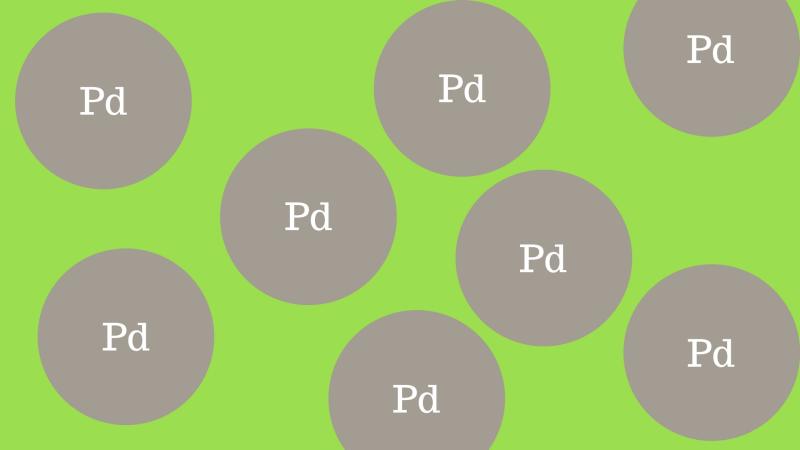
Humans have used nanoparticles since antiquity. Stone age workers, artists during the renaissance, and ancient metallurgists have all used nanoparticles either for decorations or to enhance the properties of materials.
Today, nanoparticles play an important role in many engineering and medical applications. Metal nanoparticles like gold, silver, zinc, platinum etc. have been used for coloring and strengthening materials, as catalysts in chemical reactions etc. Palladium is one such material commonly used to make metal nanoparticles. Palladium Nanoparticles (Pd NP) are increasingly being used as a catalyst in many oxidation and reduction reactions.
In a new study, scientists from Dibrugarh University, Dibrugarh and University of Aveiro, Portugal, with assistance from the Department of Biotechnology, India have developed a new biogenic method of synthesizing palladium nanoparticles. Using leaf extracts and starch, the scientists were able to synthesize highly dispersed Pd NPs.
The scientist collected fresh green leaves of Garcinia pedunculata, better known as Bar Thekera in Assamese, from Dergaon area in Assam. The leaves are chopped and turned into an aqueous solution which served as a bio-reductant, reducing Palladium acetate into palladium nanoparticles, while starch served as a bio-stabilizer, keeping the reactions stable. Once synthesized, the solution was viewed under spectrophotometer and a Transmission Electron Microscope to verify the presence of the Pd NPs.
On synthesizing the particles, the scientists then performed chemical reactions using the Pd NPs as a catalyst. They tested the effect of the nano particles in three situations or reactions – in Suzuki- Miyaura reaction, Selective oxidation of alcohols to corresponding carbonyl compounds and reducing toxic Chromium into a non-toxic form. The newly synthesized Pd nanoparticles were proven to be an effective catalyst in all three reactions. The scientists also found another remarkable property of the Pd NPS – the particles also exhibited anti-microbial and anti-biofilm properties. When exposed to a newly discovered multidrug resistant bacterial strain—Cronobacter sakazakii, the Pd NPs were found to prevent the growth of the bacteria suggesting uses in medical applications as well. The newly developed method can be considered as a ‘green way’ to synthesize Palladium nanoparticles.
























